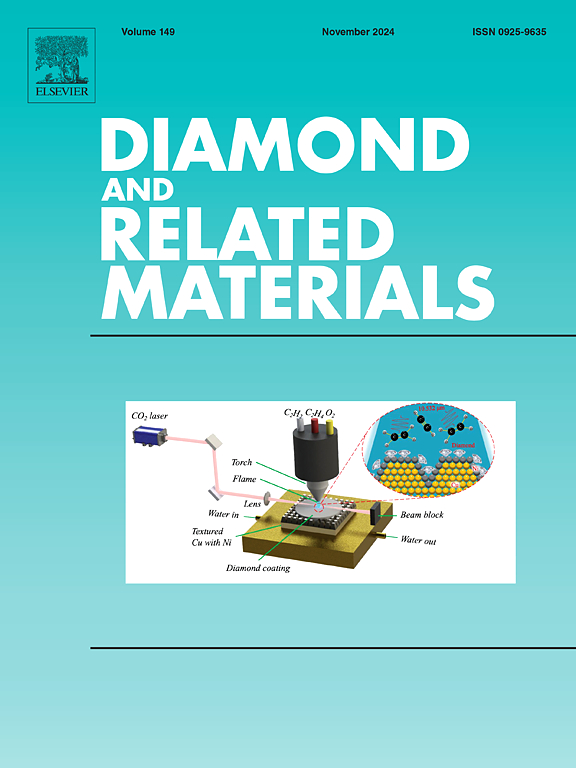DLC涂层刀具高速微铣削碳纤维增强塑料的性能评价
IF 4.3
3区 材料科学
Q2 MATERIALS SCIENCE, COATINGS & FILMS
引用次数: 0
摘要
碳纤维增强塑料(CFRP)因其高抗拉强度、刚度、轻量化、低热膨胀和高弹性模量而非常适合应用于航空航天、国防等战略部门。CFRP复合材料对微型复杂3D特征的需求也在逐渐增加。微铣削是一种微加工工艺,可以在碳纤维增强塑料部件上产生微特征,具有高材料去除率和表面光洁度。然而,CFRP复合材料的非均匀结构和磨蚀性等挑战可能导致纤维分层和工具磨损等问题。由于碳纤维布的低热扩散率导致的加工区域局部热积聚也会导致刀具的加速磨损。碳纤维增强塑料的微铣削加工对航空航天、半导体、国防等战略部门至关重要,但在这方面的研究工作还很缺乏。因此,本研究利用类金刚石(DLC)涂层刀具进行高速微铣削,研究CFRP复合材料的微加工性。采用无涂层和DLC涂层硬质合金立铣刀在不同进给量和主轴转速下进行了实验。分析了碳纤维布的临界切割区和纤维分层行为。DLC涂层刀具的纤维分层率较低,切削力较低。DLC涂层刀具具有较好的表面质量和较好的加工性能。随着每槽进给量的增加,在DLC涂层刀具的前表面观察到涂层的分层。本文章由计算机程序翻译,如有差异,请以英文原文为准。

Performance evaluation of DLC coated tools in high-speed micromilling of carbon fibre reinforced plastic
Carbon fibre reinforced plastic (CFRP) is highly desirable for applications in strategic sectors such as aerospace, defence, etc., because of its high tensile strength, stiffness, lightweight nature, low thermal expansion, and high modulus of elasticity. The demand for miniature complex 3D features in CFRP composites is also gradually increasing. Micromilling is one of the micromachining processes that can create microfeatures on CFRP components with high material removal rates and surface finish. However, challenges like non-homogeneous structure and abrasive nature of the CFRP composites can lead to issues such as fibre delamination and tool wear. The localized heat buildup in the machining zone caused by the low thermal diffusivity of CFRP can also result in accelerated tool wear. There is a lack of research work in the area of micromilling of CFRP, which is essential for strategic sectors such as aerospace, semiconductor, defence, etc. Therefore, this study investigates the micromachinability of CFRP composites using high-speed micromilling with diamond-like carbon (DLC) coated tools. Experiments were conducted using uncoated and DLC coated tungsten carbide endmills at different feeds per flute and spindle speeds. The critical cutting zone and behavior of fibre delamination in CFRP were analyzed. Lower fibre delamination and lower cutting forces were observed for DLC coated tools. The DLC coated tools exhibited better surface quality and superior machining performance. Delamination of the coating at the rake face on the DLC coated tool was observed with an increase in feed per flute.
求助全文
通过发布文献求助,成功后即可免费获取论文全文。
去求助
来源期刊

Diamond and Related Materials
工程技术-材料科学:综合
CiteScore
6.00
自引率
14.60%
发文量
702
审稿时长
2.1 months
期刊介绍:
DRM is a leading international journal that publishes new fundamental and applied research on all forms of diamond, the integration of diamond with other advanced materials and development of technologies exploiting diamond. The synthesis, characterization and processing of single crystal diamond, polycrystalline films, nanodiamond powders and heterostructures with other advanced materials are encouraged topics for technical and review articles. In addition to diamond, the journal publishes manuscripts on the synthesis, characterization and application of other related materials including diamond-like carbons, carbon nanotubes, graphene, and boron and carbon nitrides. Articles are sought on the chemical functionalization of diamond and related materials as well as their use in electrochemistry, energy storage and conversion, chemical and biological sensing, imaging, thermal management, photonic and quantum applications, electron emission and electronic devices.
The International Conference on Diamond and Carbon Materials has evolved into the largest and most well attended forum in the field of diamond, providing a forum to showcase the latest results in the science and technology of diamond and other carbon materials such as carbon nanotubes, graphene, and diamond-like carbon. Run annually in association with Diamond and Related Materials the conference provides junior and established researchers the opportunity to exchange the latest results ranging from fundamental physical and chemical concepts to applied research focusing on the next generation carbon-based devices.
 求助内容:
求助内容: 应助结果提醒方式:
应助结果提醒方式:


